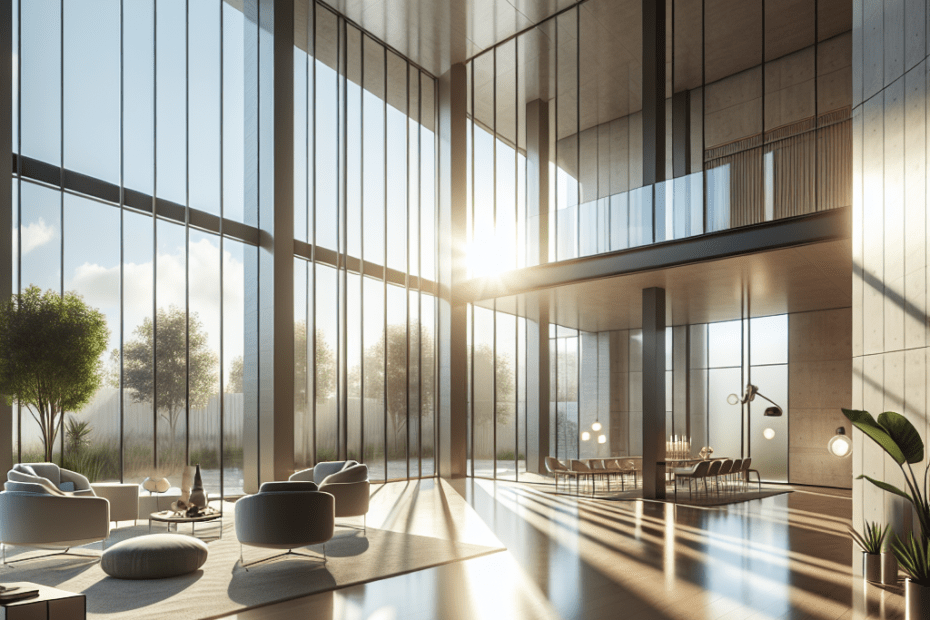The Power of Floor-to-Ceiling Windows in Contemporary Interiors
In modern-day architecture, floor-to-ceiling windows have emerged as a pivotal feature in contemporary interiors. They not only elevate the aesthetic appeal but also bring multiple practical benefits to spaces. From enhancing natural light to improving the overall ambiance, these expansive windows appear to be a favorite among designers and homeowners alike.
Why Floor-to-Ceiling Windows?
Floor-to-ceiling windows bring the outside world into the home, creating an open and airy atmosphere. By maximizing the influx of natural light, they craft an inviting and lively space. According to a study from the Architectural Digest, homes with significant natural light tend to positively impact mood and well-being. This is especially relevant in urban environments, where such windows offer a much-needed connection to the outdoors.
Natural Light and Energy Efficiency
Natural light is one of the greatest attributes of floor-to-ceiling windows. It reduces the need for artificial lighting, which not only decreases energy consumption but also cuts electricity bills. The presence of natural light has been correlated with increased productivity and improved mental health, according to the National Center for Biotechnology Information.
Moreover, these windows help maintain an energy-efficient home by allowing for better cross-ventilation. During warmer seasons, they can be opened to let in a breeze, reducing the reliance on air conditioning. Energy-efficient glass options are available that provide insulation during colder months, maintaining a comfortable indoor temperature.
Design Flexibility and Aesthetic Appeal
Floor-to-ceiling windows provide a versatile canvas for creative interior design. They inspire open layouts and seamless transitions between indoor and outdoor spaces, which are characteristics of contemporary design. Homeowners can capitalize on the impressive views provided by these windows, enhancing the scenic beauty of their surroundings.
The sleek and unobtrusive design of these windows allows them to fit in effortlessly with various interior styles, from minimalist to industrial. They enhance the look of any room, making spaces appear more expansive and luxurious.
Making Spaces Feel Larger
By visually extending the boundaries of a room, these windows create the illusion of a larger space. This is beneficial in smaller homes or apartments where maximizing space is crucial. The continuous visual line from floor to ceiling draws the eye upwards, emphasizing the height of the room and making it feel less confined.
Key Takeaways
- Floor-to-ceiling windows enhance natural light, creating bright and welcoming environments.
- They reduce energy costs through decreased reliance on artificial lighting and improved ventilation.
- These windows offer design flexibility, fitting with various interior styles seamlessly.
- Floor-to-ceiling windows make rooms feel larger and more connected with the outdoors.
Floor-to-Ceiling Windows: A Comparative Table
| Feature | Advantages | Advantages Description |
|---|---|---|
| Natural Light | Enhances Mood & Reduces Energy Use | Natural light positively impacts mental health and decreases the need for artificial lighting. |
| Energy Efficiency | Cost Savings & Eco-Friendly | Decreases energy bills and reduces carbon footprint with improved insulation and ventilation. |
| Design Flexibility | Stylish & Adaptable | Matches different design styles and improves aesthetic appeal with a modern look. |
| Spatial Enhancement | Makes Rooms Feel Larger | Creates a sense of openness and amplifies room size perception. |
Frequently Asked Questions
1. What are floor-to-ceiling windows?
Floor-to-ceiling windows are large glass installations that stretch from the floor to the ceiling of a room, offering expansive views and maximum natural light.
2. Are floor-to-ceiling windows energy efficient?
Yes, they can be energy efficient, particularly when made with insulated or double-glazed glass, which helps maintain indoor temperature and reduces energy costs.
3. Are floor-to-ceiling windows safe?
When installed correctly with safety glass, they are secure. It’s important to use tempered glass which is stronger and less likely to cause injury if broken.
4. How do floor-to-ceiling windows affect privacy?
Privacy can be managed with window treatments such as blinds, shades, or smart glass technology that can be adjusted to maintain seclusion when desired.
5. Are they suitable for all types of buildings?
While primarily used in modern designs, they can be adapted for various architectural styles, as long as structural support and design considerations are addressed.
